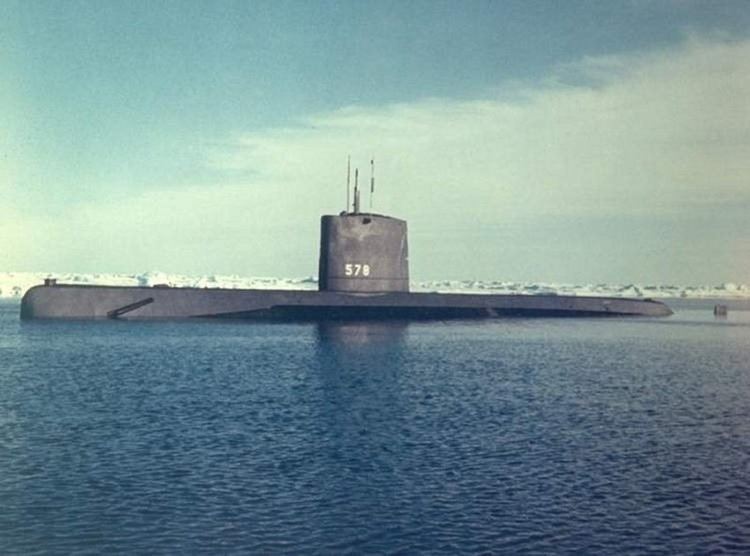Built 1955–1959 | ||
 | ||
Builders General Dynamics Electric BoatPortsmouth Naval ShipyardMare Island Naval Shipyard Succeeded by Skipjack classBarbel class | ||
The Skate-class submarines were the United States Navy's first production run of nuclear-powered submarines. They were an evolution of the Tang class in everything (especially their propulsion plants), which were based on the operational prototype USS Nautilus. The four Skate class boats re-introduced stern torpedo tubes. Although among the smallest nuclear-powered attack submarines ever built, the Skate class served for many years, with the last being decommissioned in 1989. USS Skate was the first submarine to surface at the North Pole, on 17 March 1959.
Contents
Skate and Sargo were built with the S3W reactor, Swordfish and Seadragon also had the S3W reactor in the S4W reactor plant (same machinery in an alternate arrangement).
Design
The Skate class were designed as economical production nuclear-powered submarines (SSNs), and thus were smaller and more austere than their ground-breaking predecessor Nautilus, whose high cost had raised concerns. They were designed before Nautilus demonstrated the advantages of sustained high underwater speed, thus their designed speed was about the maximum speed of the conventional Tang class, which the Skates resembled in almost every aspect except propulsion. Their S3W reactor was a scaled-down version of Nautilus' S2W reactor with about half the power output; it was known as SFR (Submarine Fleet Reactor) during development. A slightly modified version known as S4W powered the second pair of Skate-class boats. Unfortunately, scaling down the reactor did not reduce the weight of reactor shielding proportionally, and it was eventually realized that further downsizing was impractical. In the late 1950s it was hoped that the nuclear-powered aircraft program would develop reactors suitable for very small SSNs, but the program was unsuccessful. Their armament was the same as the Tangs, six bow and two stern 21-inch (533 mm) torpedo tubes. Like the Tangs, the stern tubes had no ejection pump, and could only be used for swim-out weapons such as the Mark 37 ASW homing torpedo. The quest for a high submerged speed and improved sonar led to the subsequent Skipjack and Thresher classes becoming the model for further development.
Service
Skate was notable as the first submarine to surface at the North Pole, on 17 March 1959. A previous attempt in 1958 had resulted in no suitable place found for surfacing near the Pole. Sargo and Seadragon also conducted significant polar operations in their careers. This class was the most suited for ice breakthrough attempts until the Sturgeon class, with fairwater planes that could be rotated vertically, entered service beginning in 1967. After 25–30 years each of successful service, mostly out of Pearl Harbor, the class was retired in the 1980s and disposed of through the Navy's nuclear Ship-Submarine Recycling Program.
